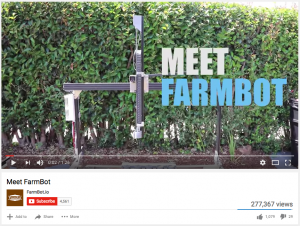Jan 25 2017
Computer Science in Agriculture
When most people think of farming, they envision the quaint, harmonic lifestyle of ages past, complete with verdant, rolling hills and roosters crowing in the distance. The advent of computer science, however, has revolutionized almost every facet of society – from entertainment to business to medicine – and farming is no exception. In fact, the changes made to this field are perhaps some of the most apparent in all of civilization, and this creates a rather unique juxtaposition; farming, one of the oldest disciplines in human history, has transformed into a massive, automation-driven industry, capable of achieving efficiency that, a few decades ago, could have only been dreamt of. Today, we are going to look at some of the agricultural overhauls wrought by computer science (specifically in the field of crop-based agriculture), as well as how they have impacted society as a whole.
It is important to recognize that farming is a complex process, relying on many external variables that must be determined before any progress can be made. One of the first tasks that a farmer must complete is a soil survey – the gathering of soil samples from across his or her field, and the analysis of the nutrient content (nitrogen, phosphorous, and potassium levels) thereof. Afterward, the farmer must procure a mixture of fertilizer that best accommodates the needs of his or her field, so that the crops will grow to their full potential. Before the advent of computer science, soil samples were collected arbitrarily; the farmer would walk to one section of the field, gather a handful of soil, and then proceed to the next section. Then, he or she would concoct a single mixture of fertilizer and apply it indiscriminately to the entire section. Now, thanks to computerized spreading machines (called Variable Rate Equipment), the farmer can input the soil surveys for each part of the field into the machine itself, and the spreader will then apply different fertilizer to each section based on its own individual needs. Rather than Section A and Section B receiving the same generalized fertilizer, the computer remembers the needs of each section, applying different mixtures of nutrients based on the information provided. Furthermore, the physical act of fertilizing is now accomplished automatically by the use of GPS (Global Positioning System) technology, with the operator overseeing the machine simply as a
precaution.
Comments Off on Computer Science in Agriculture
